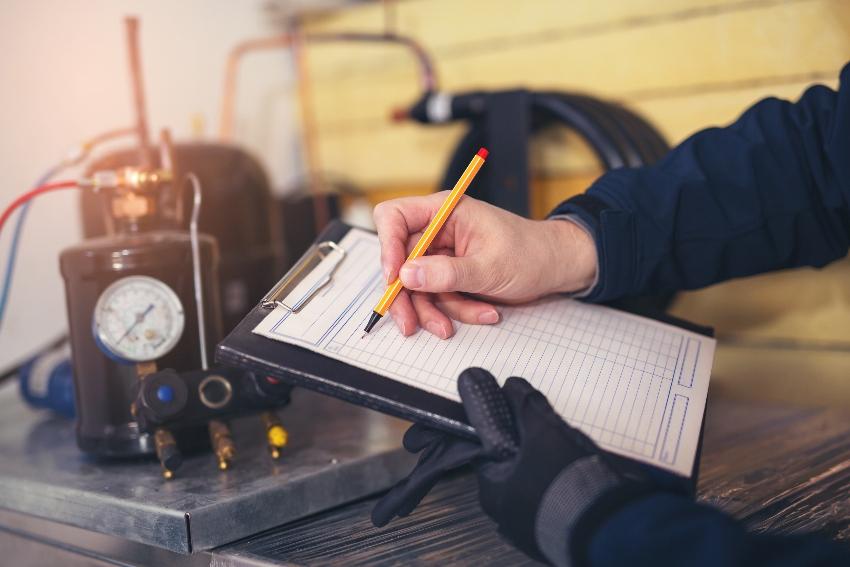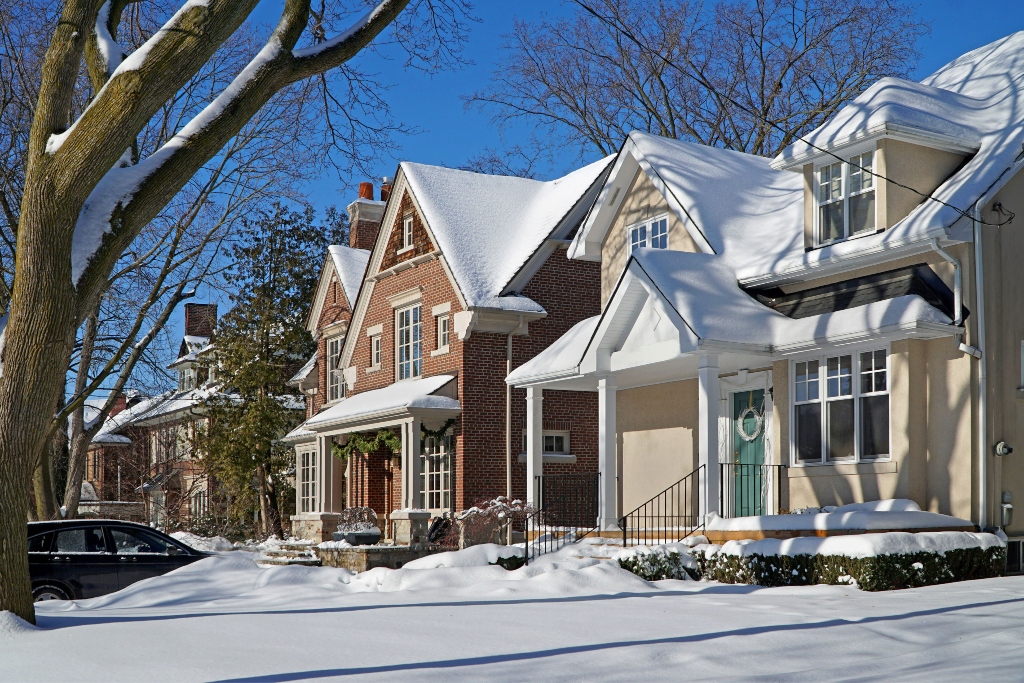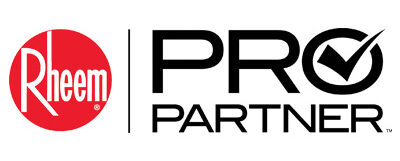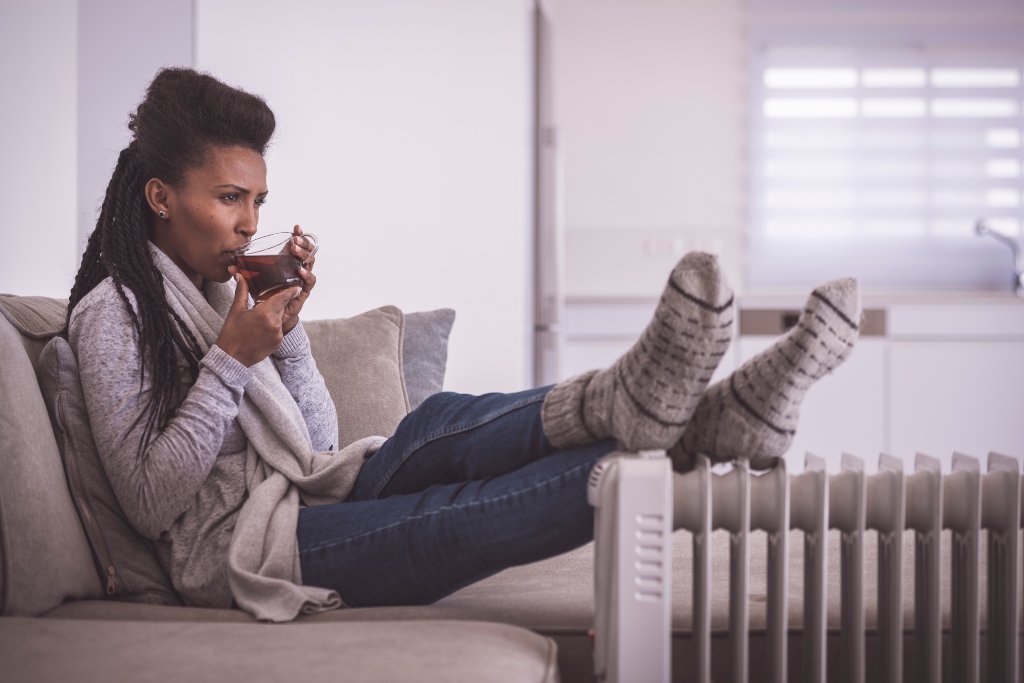Repair or Replace: 6 Signs You Need a New Air Conditioner
Posted on by WestAIR Heating & Cooling

The weather is heating up here in Minnesota. Have you given your cooling system a test run yet? Doing so allows you to address any issues before the hot and humid summer days arrive. But how will you know if you need a repair or a replacement? Read on to learn about six signs you need a new air conditioner.
Frequent Repairs and Old Age
According to the U.S. Department of Energy (DOE), central air conditioners typically last about 15-20 years. And while occasional repairs are to be expected, having to do so frequently means you likely need a replacement. If your AC is around 15 years old and/or needs multiple service calls during the cooling season, it may be time to forget the repair bills and invest in a new cooling system.
Strange Odors and/or Sounds
Your AC shouldn’t be silent, but be on alert for certain noises that point to a problem:
- Loud grinding, squealing, or scraping noises could indicate a faulty belt, which can damage other parts if unaddressed.
- Frequent cycling (system turning on/off) could be caused by an improperly sized unit, a leaky ventilation system, or issues with the evaporator coils.
Additionally, the air pushed out by the system should not offend your nostrils. Don’t ignore strange odors when your AC is on:
- Burning smells may be due to burned-out wiring or other issues with the unit’s internal pieces, which could lead to an electrical fire.
- Foul, rotten egg smells could indicate a gas leak that poses a serious health and safety hazard for you and your family.
- Musty smells could mean moisture is escaping into your ductwork and creating health risks.
If you notice any of these issues, contact WestAIR ASAP to investigate and resolve the issue to keep your household safe.
Moisture Buildup On/Around Condenser Unit
Your AC will naturally produce some condensation, but liquids should never leak from the unit. Pooling water may be caused by a blocked or busted condensation tube and is a less serious issue. However, the refrigerant the system uses to cool the air is poisonous. Contact our expert HVAC technicians immediately if you notice any liquids on or around the condenser unit.
Excess Indoor Humidity
Speaking of moisture, a properly functioning cooling system should help maintain proper indoor humidity levels. If your home feels excessively humid, that’s a sign that your AC is failing and may need to be replaced.
Weak, Warm, and/or Uneven Air Distribution
Air conditioners should supply your entire home with cool, evenly distributed air. Warm air could be caused by a problem with the compressor or restricted airflow. If you notice uneven or weak air distribution from your vents, you may need to change/clean your filter or clean your ductwork to clear a blockage. You should schedule a professional inspection from an HVAC specialist to diagnose the exact cause and discuss the ideal solution to these problems.
Higher Energy Bills
Higher energy bills are to be expected as we increase the demand on our HVAC system during the cooling months. But if your bills seem to spike unreasonably, it’s likely that your AC isn’t operating efficiently and needs to be repaired or replaced.
Rely on WestAIR Heating & Cooling for AC Repair and Replacement
As we prepare for the hot and humid summer days ahead, now’s the time to ensure your AC is ready. Keep an eye out for these signs you need a new air conditioner when testing your system before the cooling season is in full swing. If you notice any issues, the local HVAC experts at WestAIR are here to help.
Contact us to learn more and schedule service.
This entry was posted in AC,Air Conditioning,Cooling,Health Tips,HVAC Maintenance,Indoor Air Quality,Repairs,Tips and tagged AC Repair, AC Replacement, AC Warning Signs, Air conditioner maintenance, Air Conditioner Repair, Air Conditioner Replacement, Air Conditioner Warning Signs, air conditioning, Heating and Cooling Services, Homeowner Education, Homeowner Tips, HVAC Safety, HVAC Warning Signs, Residential HVAC, Signs You Need a New AC, Signs You Need a New Air Conditioner, WestAIR Heating & Cooling
Keeping Air Ducts Clean
Posted on by WestAIR Heating & Cooling

In a previous blog, we discussed air duct cleaning and maintenance. Because these duties help provide better indoor air quality, we wanted to mention them again and reiterate their importance to your home and health. Learn more about some reasons for keeping air ducts clean and ways to do so.
Indoor Air
Wherever you go, it only makes sense that you want to breathe the cleanest, healthiest air possible.
The Environmental Protection Agency estimates that the average American spends 90 percent of their life indoors. As such, it’s important for your home’s air to be free of as many contaminants as possible. This is especially important since the accumulation of indoor air pollutants is exponentially higher than regular outdoor concentrations.
Some effects of poor indoor air include respiratory issues and disease, headaches, dizziness, and fatigue. Oftentimes indoor air pollutants can increase the intensity of issues like asthma and even cause eye, nose, or throat dryness and irritation. Protect yourself and your family by keeping air ducts and your home’s air clean.
Duct, Duct, Dirty Duct?
Your HVAC system often pulls in outside air to condition and distribute through the home, so dirt, dust, and other allergens find their way in. Since the ductwork throughout your home is hidden, you probably don’t give it much thought. And because it’s hidden, it’s more difficult to access and clean.
So how do you know if your ductwork is hiding something unhealthy? Look for telltale signs, such as:
- Dust. If you continually notice dust even after you’ve cleaned, check your vents. Remove the register cover to see if the ductwork is lined with dirt or dust, too.
- Cost increase. Are your utility bills noticeably higher compared to the same time last year? Your HVAC system may be working harder (and less efficiently) because of restricted airflow. This could be from dirty ducts or dirty air filters. A trusted technician can perform an inspection and determine the cause.
Keeping Air Ducts Cleaner
Routine home maintenance can help keep your air ducts cleaner and your indoor air fresher.
Check and change HVAC filters. This could be every 30 days or every few months, depending on how often your system runs, if you have pets, or if you have younger children or allergy sufferers in the home. Check the filter on a regular basis and change it as needed.
Have your HVAC system inspected at least once a year to ensure it is operating at peak performance. This will also allow you to catch and fix any smaller issues before they become potentially bigger problems. Routine maintenance can extend the life of your heating and cooling systems, saving you money in the long run.
Complete household chores each week. This includes dusting hard surfaces and flooring, vacuuming carpeted areas (and vent covers), and running bedding through the wash. Also, vacuum and wash pet bedding as needed, and consider a high-quality HEPA filter vacuum to further reduce indoor air contaminants.
A few upgrades will also go a long way toward improving air quality at home.
- Rid your home of dry air with a whole house humidifier. Dry air can make skin to feel tight and itchy or cause nose or throat discomfort. The wood inside your home can also be negatively affected by dryness. Adding moisture to the air can increase your overall home comfort.
- Remove odors and pollutants with a UV light air purification system. A BreatheCLEAN UV air purifier works with your current HVAC system and removes contaminants to provide continuous protection.
Small changes to daily, weekly, and yearly routines can help with keeping air ducts clean while increasing overall indoor air quality. If you think your ductwork should be checked, rely on the experienced professionals at WestAIR Heating & Cooling.
Contact us today to learn more about our duct cleaning or other services.
This entry was posted in Duct Cleaning,Health Tips,Humidifier,Humidity,HVAC Maintenance,Indoor Air Quality,Spring,Tips and tagged Air ducts, Clean Air Ducts, Duct cleaning, Duct Cleaning and Indoor Air Quality, Duct cleaning service, HVAC Maintenance, HVAC System Efficiency, Keeping Air Ducts Clean, Professional duct cleaning, Residential HVAC, Signs of Dirty Ductwork, westair heating and cooling
6 Furnace Issue Warning Signs to Watch Out For
Posted on by WestAIR Heating & Cooling

November may have given us a few warm, sunny days, but it’s safe to say heating season is upon us in Minnesota. We’ll have our furnaces working hard for the next few months, making it crucial for homeowners to know when their system needs professional repair or replacement. Use these furnace issue warning signs so you know when it’s time to call in the pros this winter.
Old Age
With proper installation and regular maintenance service, furnaces will last 15 to 20 years on average. Check the age of your furnace, and if it’s over 15 years old, it’s time to start considering an upgrade. Contact WestAIR for a free estimate and to schedule a professional inspection and evaluation with one of our HVAC technicians.
Frequent, Costly Repairs
Your furnace should be serviced annually for maintenance, but regular repairs that take a toll on your wallet are a sure sign that your furnace needs replacing. If repair service costs 50 percent or more than a replacement, a system upgrade is highly recommended. Not only will you receive peace of mind throughout the heating season, modern furnaces offer much higher efficiency and performance, saving you money on utility and repair bills.
Irregular Sounds, Smells, and Cycling
HVAC systems operate quietly and can easily go unnoticed if they’re functioning properly. Keep an eye (as well as an ear and nose) out for these irregular warning signs:
- Banging, rattling, popping, humming, or screeching sounds
- Persistent or random burning smells
- More frequent on/off cycling (AKA short cycling)
These complications indicate serious mechanical problems that decrease heating efficiency and pose a potential fire hazard. Contact WestAIR, your local HVAC company, ASAP if you notice any of these issues.
Uneven or Inefficient Heating
Properly sized, installed, and maintained furnaces are designed to heat your entire house evenly. Signs of inefficient heating include:
- Finding cold spots or different temperatures in rooms around the home
- Having to adjust the thermostat frequently to maintain comfort
- Turning the temperature higher than normal to keep the house warm
- Seeing unexpected spikes in utility bills
If you experience any of these issues, the solution could be anything from a simple repair to a thermostat or furnace replacement. Don’t suffer through poor heating and higher costs – have an HVAC technician inspect your system and diagnose the problem and discuss your options.
Decreased Indoor Air Quality
Furnaces and HVAC systems are designed to help maintain indoor air quality and humidity as well as temperature. Yours might be failing if you or your family notice the following:
- Stuffy or stale air
- Dry nose, throat, or skin
- Excessive dust accumulation
- Frequent static shocks
- Cracked wood on furniture, fixtures, and frames
- New or worsening allergy symptoms
Carbon Monoxide Exposure
Furnaces fueled by gas or oil produce carbon monoxide, which is poisonous and potentially life-threatening with prolonged exposure. Heating systems are designed to trap and safely exhaust this dangerous gas, but it is possible for a leak to develop over time and put your family at risk. Signs of a carbon monoxide leak include:
- Yellow and/or flickering burner flame (should be blue with a consistent burn)
- Soot around the furnace and registers
- Excess moisture on exterior windows, walls, and other cold surfaces
- Rust, cracks, or corrosion on/around flue pipes and other furnace components
Warning signs of carbon monoxide exposure can also mimic common illnesses, so beware of unexplained nausea, frequent headaches, confusion/disorientation, burning nose and eyes, and flu-like symptoms. Remember, carbon monoxide poisoning can cause serious health issues and even death. If you or a family member experience any of these signs and symptoms, seek medical attention immediately and then call your utility provider and HVAC technician ASAP.
We all know that Minnesota weather offers plenty of surprises, and getting stuck with a broken furnace is a surprise we could all do without. Remember these furnace issue warning signs so you can stay ahead of issues and know when it’s time for professional repair or replacement service.
WestAIR is a Rheem Pro Partner and proudly services all residential HVAC brands. Contact us for all your heating and cooling needs.

This entry was posted in Furnace,Health Tips,Heating,Repairs,Tips,Winter and tagged Furnace, Furnace Issue Warning Signs, Furnace Issues, Furnace Repair, Furnace replacement, Furnace Upgrade, Furnace Warning Signs, Heating, Heating Season, Heating System, High-Efficiency Furnace, Home Heating, Home Heating Safety, HVAC Safety, HVAC Warning Signs, Replace furnace, Residential Furnace, Residential HVAC, Rheem, Rheem Furnaces, Rheem Pro Partner, WestAIR furnace replacement
7 Tips for Winter Indoor Air Quality Maintenance
Posted on by WestAIR Heating & Cooling

With the recent snowfall and chilly temps, there’s no denying that winter is almost here. Time to prepare! As heating season makes its way to Minnesota, we must remember to keep the air in our home clean as well as warm. Use this guide to winter indoor air quality maintenance to keep your family cozy, healthy, and happy throughout the season.
Poor Winter Indoor Air Quality: Causes and Effects
When cold weather hits, we seal our homes to prevent the warm air produced by our furnaces from escaping. While this helps increase comfort and energy efficiency, it also traps dust, pollen, and other airborne contaminants inside the home that then decrease indoor air quality. Common signs of poor winter indoor air quality include:
- Dry, itchy, or watery eyes
- Cold or flu symptoms: coughing, sneezing, nausea
- Heightened symptoms of asthma and other respiratory illness
- Fatigue and trouble concentrating
- Irritation of the nose and throat, particularly dryness
- Headaches
Tips for Winter Indoor Air Quality Maintenance
Escaping the bitter cold of Minnesota winters means spending more time inside our home, making clean indoor air crucial to our comfort and health. Thankfully, homeowners can improve and maintain air quality with these helpful tips.
- Clean regularly – Don’t let dust, mold spores, and other pollutants build up around the home. Dust hard surfaces and vacuum (using a vacuum with a HEPA filter if possible) at least weekly. Use non-toxic cleaners free of volatile organic compounds (VOCs), which are a major contributor to unhealthy air.
- Maintain a clean filter – Air filters keep dust and other debris from entering and harming your HVAC system, but must be maintained in order to prevent these irritants from making their way back into the air. Remember to change air filters monthly or clean if resuable.
- Schedule annual service maintenance – Ensure your heating system runs at peak performance and provides clean, warm air with professional maintenance service from a WestAIR HVAC expert.
- Have your ductwork cleaned – Dirt, dust, pet hair and dander, and other irritants settle inside your air ducts over time. Schedule duct cleaning service before winter is in full swing, and plan to do so annually.
- Enhance ventilation with an air exchanger – Sealing the home in winter leads to recycled, stale air inside. To resolve this, air exchangers deliver a continuous flow of fresh, filtered outdoor air while simultaneously exhausting unhealthy indoor air.
- Control humidity with a whole house humidifier – Humidity plays a crucial role for indoor air quality. Dry winter air can cause nose, throat, and skin discomfort, as well as damage wood fixtures and furniture over time. Installing a whole house humidifier will help maintain proper humidity levels in your home.
- Consider additional clean air solutions – Air cleaners work with your current system to remove excess dust and other irritants that decrease indoor air quality. Ultraviolet (UV) light purification systems utilize UV rays to eliminate odors harmful airborne pathogens like viruses, bacteria, mold, and VOCs.
This year has presented us all with new and unique challenges. But no matter how unpredictable 2020 has been, we know we can always plan for harsh winter weather here in Minnesota. We’re already seeing the temps drop and snow fall, so don’t wait! Use these winter indoor air quality maintenance tips to enjoy clean, comfy air inside your home this heating season.
For all your heating and cooling needs, trust the HVAC experts at WestAIR. Contact us today to learn more.
This entry was posted in Duct Cleaning,Furnace,Health Tips,Heating,Humidifier,Humidity,HVAC Maintenance,Indoor Air Quality,Tips,Winter and tagged Air cleaner, Air exchanger, Duct cleaning, Duct cleaning service, Heating, Heating Tips, Humidfier, Humidity, Humidity Management, HVAC tips, Indoor air quality, Indoor air quality solutions, Professional duct cleaning, Residential HVAC, Ventilation, WestAIR Heating & Cooling, Winter, Winter HVAC, Winter HVAC Tips, Winter Indoor Air Quality, Winter Indoor Air Quality Maintenance, Winter Tips, Winterize
Subscribe to Our Blog
With RSS feeds, you don't have to visit our site everyday to keep up to date. Simply subscribe to our blog via RSS or Email and our posts will come to you!
Search Blog Posts
Categories
Archives
- April 2024 (1)
- February 2024 (1)
- January 2024 (1)
- February 2023 (1)
- January 2023 (1)
- December 2022 (1)
- November 2022 (1)
- October 2022 (1)
- September 2022 (1)
- August 2022 (1)
- July 2022 (1)
- June 2022 (1)
- May 2022 (1)
- April 2022 (1)
- March 2022 (1)
- February 2022 (2)
- December 2021 (1)
- November 2021 (1)
- October 2021 (1)
- September 2021 (1)
- August 2021 (1)
- July 2021 (1)
- June 2021 (1)
- May 2021 (1)
- April 2021 (1)
- March 2021 (2)
- January 2021 (1)
- December 2020 (1)
- November 2020 (1)
- October 2020 (1)
- September 2020 (1)
- August 2020 (1)
- July 2020 (1)
- June 2020 (1)
- May 2020 (1)
- April 2020 (1)
- March 2020 (1)
- February 2020 (2)
- November 2019 (1)
- August 2019 (2)
- June 2019 (1)
- May 2019 (1)
- April 2019 (1)
- March 2019 (1)
- February 2019 (1)
- January 2019 (1)
- December 2018 (1)
- November 2018 (1)
- October 2018 (1)
- September 2018 (1)
- August 2018 (2)
- July 2018 (1)
- May 2018 (1)
- April 2018 (1)
- March 2018 (1)
- February 2018 (1)
- January 2018 (1)
- December 2017 (3)
- November 2017 (2)
- October 2017 (2)
- September 2017 (2)
- August 2017 (1)
- July 2017 (2)
- June 2017 (3)
- May 2017 (2)
- January 2017 (4)
- November 2016 (1)
- September 2016 (3)
- July 2016 (2)
- June 2016 (2)
- May 2016 (4)
- April 2016 (1)
- March 2016 (2)
- February 2016 (2)
- January 2016 (1)
- August 2015 (1)
- July 2015 (1)
- June 2015 (3)
- May 2015 (1)
- July 2014 (2)
- June 2014 (1)
- April 2014 (1)
- March 2014 (1)
- February 2014 (2)
- October 2013 (1)
- May 2013 (1)
- March 2013 (1)
- February 2013 (1)
- August 2012 (1)
- July 2012 (2)
- June 2012 (2)
- May 2012 (2)
- March 2012 (1)
- February 2012 (1)
- December 2011 (1)
- November 2011 (1)
- October 2011 (1)
- September 2011 (1)
- August 2011 (1)
- June 2011 (1)
- May 2011 (1)
 Subscribe
Subscribe Subscribe
Subscribe